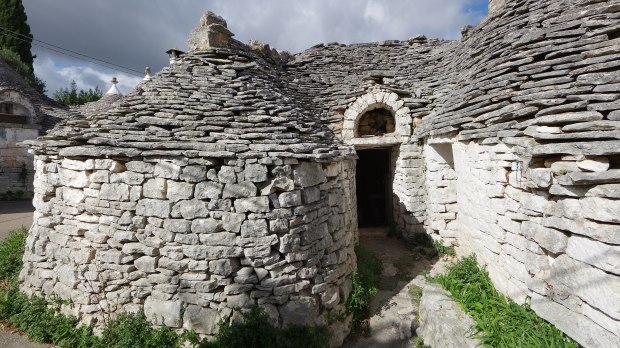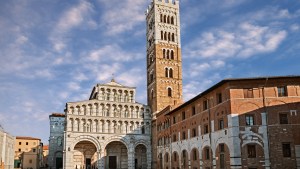In the Southern Italian region of Puglia exist unique huts made of stacked stone. Similar in size and appearance to igloos (minus the snow and ice), they have cone-shaped roofs and are accessible via a small door.
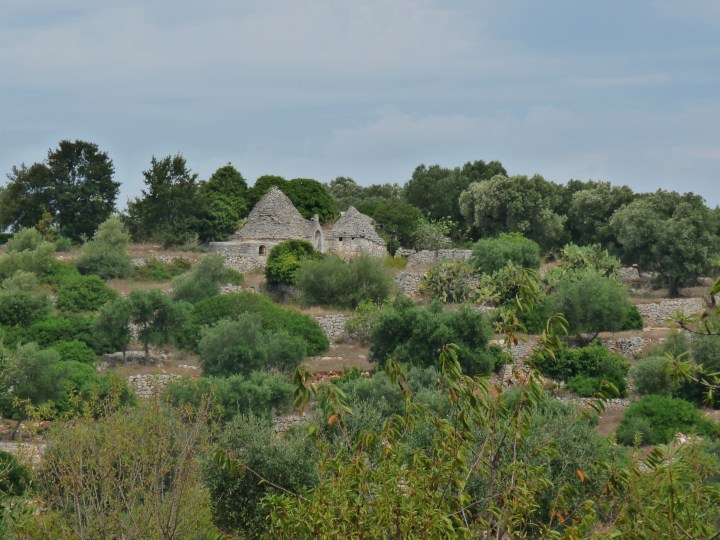
They are called trulli, deriving from the Latin word turris, which means tower. The particular huts are specific to the Itria Valley, in the Murge area of Puglia, that is in the area between Bari, Taranto, and Brindisi.
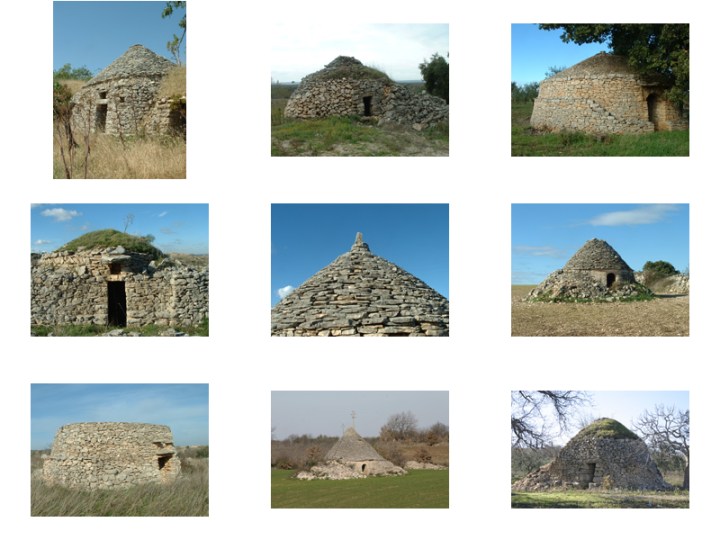
The trulli were used as temporary field shelters and storehouses or as permanent dwellings by small proprietors or peasants. Though most extant trulli were built in the final decades of the 19th century, construction of the trullo derives from a primitive building technique. They are unique in that they are constructed entirely with dry-stacked limestone; that is, they are mortarless.
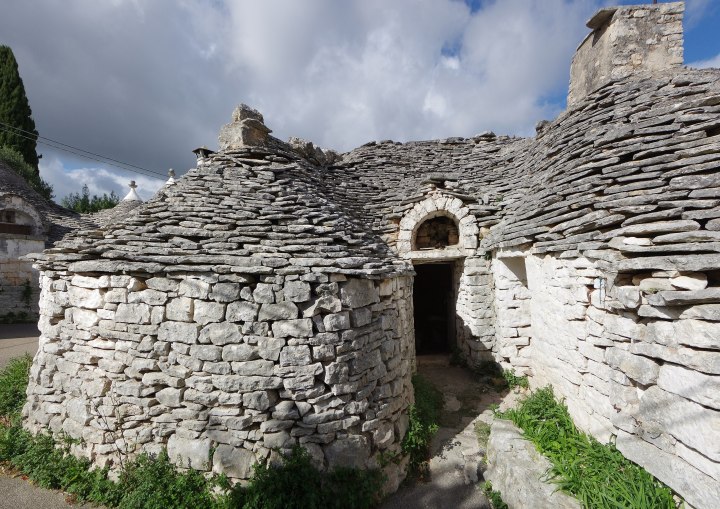
The roofs of trulli are often inscribed with signs and symbols. Originating in an era when superstition and paganism were rampant (the symbols were believed to evoke propitious favors), many now are Christian. Often the signs are simple crosses, while others can be the sun, representing the divine nature of Christ. Still others are acronyms, like S C S D, representing Sanctus Christus (Holy Christ) and Sanctus Dominus (Holy Lord), but more likely, the initials of St. Cosmas and St. Damian, twin saints to whom there is strong local devotion.
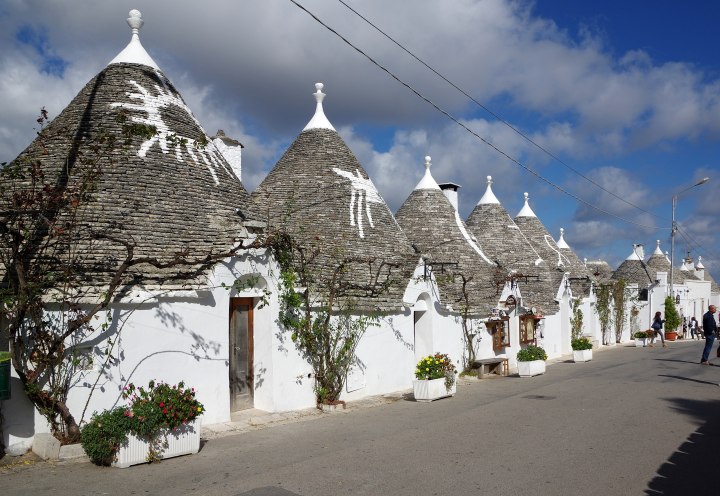
Though the trulli are ubiquitous throughout the countryside, there is a village built entirely of trulli. The old town Alberobello, halfway between Taranto and Bari, is lined with trulli.
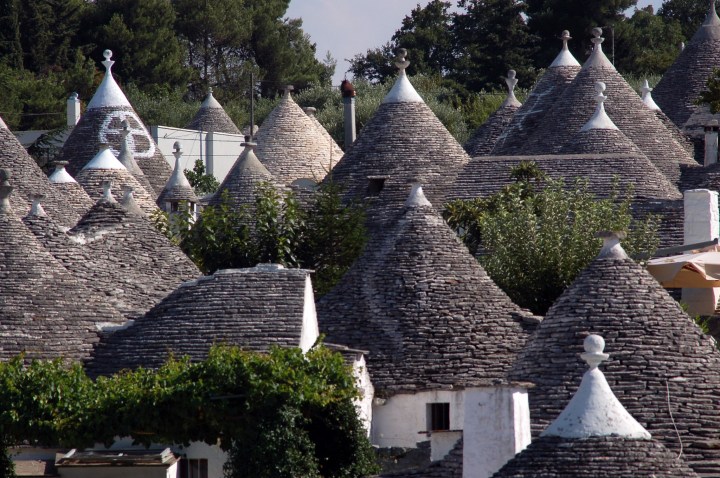
Alberobello’s trullo-church
Alberobello even has a trullo-church.
The Church of Sant’Antonio is located at the top of the Monti district, the last trulli construction in the old part of Alberobello. Its construction is quite recent, as it was completed in a short period of time in 1927.
The church was built at a time when the Catholic faith was waning and evangelical sects were making inroads in the region. So the pastor, Don Antonio Lippolis, set out to build a church. Since the Monti district was included in the register of National Monuments by decree of the King of Italy, the church had to be the same construction as the trulli.
After land was donated by a local benefactress, Don Antonio decided to build one of the first churches dedicated to the Savior (the Solemnity of Christ the King had recently been established by Pope Pius XI in 1925). Construction began in April 1926 and ended the following year with the inauguration on June 13, the feast of St. Anthony of Padua.
Though the church was originally dedicated to Christ the King, the name was changed to St. Anthony of Padua.
The Trullo Church of Alberobello is in the form of a Greek cross and is dominated by a typical trullo dome that is 21 meters high (69 ft), and a bell tower 18 meters high (59 ft).
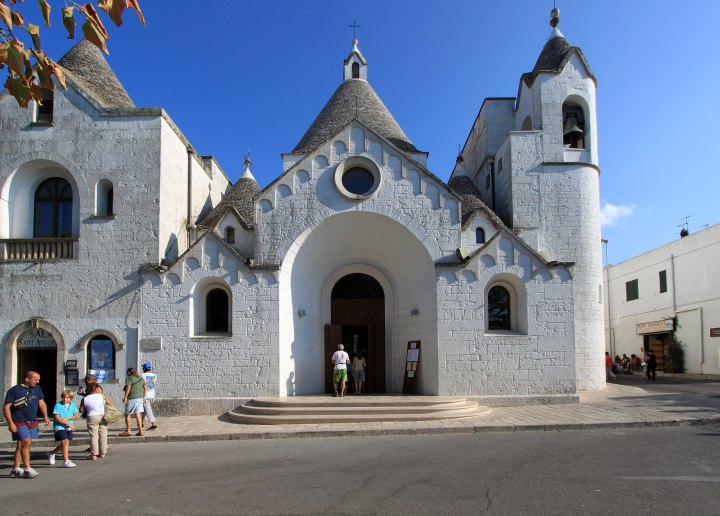
Inside, in addition to Christ on the Cross, there is a papier-mâché statue depicting St. Anthony of Padua. There are also papier-mâché statues of St. Joseph and St. Rita of Cascia, a ceramic statue of the Immaculate Conception, a relic of St. Anthony, a bas-relief of St. Luigi Guanella, and a painting of St. Padre Pio.
Since 1996, the trulli of Alberobello have been listed as a UNESCO World Heritage Site.
